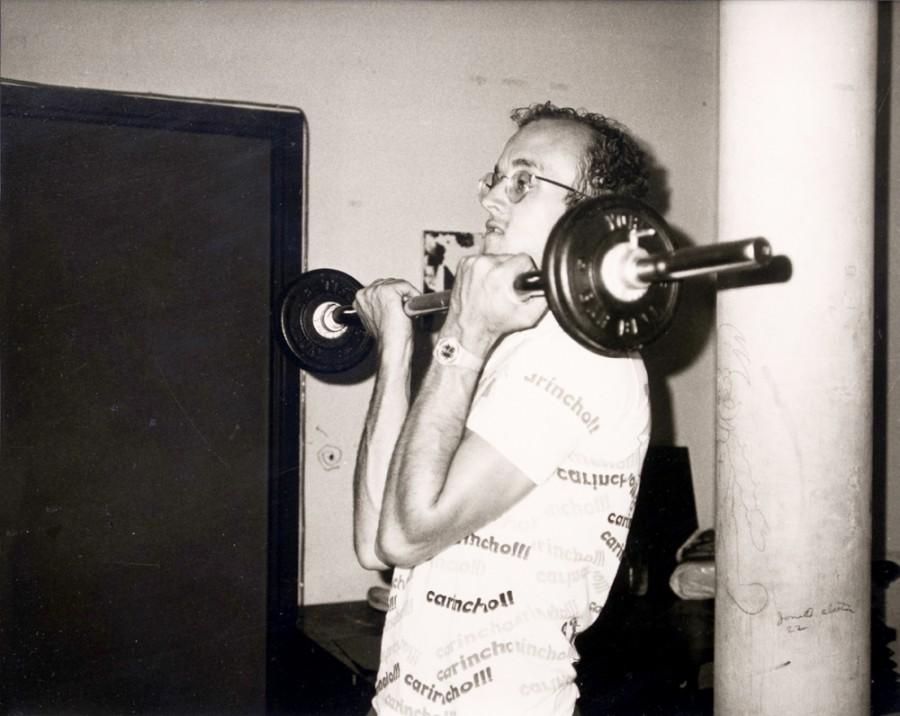Exploring COD’s best kept secret: The Warhol Collection
March 16, 2016
On his first day, Cleve Carney Gallery Intern Chris Chapa walked into an experience he would never forget. Chapa, who graduated from College of DuPage in 2015 with a degree in Fine Arts, was asked to take inventory of one of the college’s best kept secrets: 157 pieces of Andy Warhol original photography.
While Chapa was previously aware of the Warhol collection, many students unknowingly sit under photographs taken by the famous artist as they study in between classes. Some walk by his paintings everyday. If you’ve been in the MAC lobby within the past year, you’ve seen a few yourself.
In 2007, The Andy Warhol Foundation for the Visual Arts celebrated its 20th anniversary by gifting colleges around the country with 28,543 personal photographs by Warhol. The foundation did this through The Andy Warhol Photographic Legacy Program in hopes that the selected colleges would be able to preserve their sets well, leaving Warhol’s legacy on each campus. COD became one of the lucky recipients alongside nationally recognized institutions, some Chicago-based like Northwestern University and the Art Institute of Chicago, due to the college’s impressive art collection and climate controlled galleries.
Warhol experimented with photography, beginning in the 60s, up until his death in 1987. COD’s collection features colored Polaroids of celebrities, friends and inspirations of Warhol. Models range from a young Calvin Klein to Marilyn Monroe. Many of these individual shots are reflective of a series that clearly displays Warhol’s creative process, placing his models in different positions and light sources. This collection also features self-portraits by Warhol, including nude photos.
The college also possesses black and white photography by Warhol, which depicts everything from footprints in the snow to the lavish Hollywood lifestyle he was a part of.
In addition to the photographs, the college was offered six non-edition Warhol prints. These pieces are individuals, created freestanding from a complete collection. They are currently on display in the MAC lobby.
All pieces, photographs and prints are copyrighted by the foundation. This means that while the college has added each photo to its in-house collection, COD has no right to sell the pieces.
Upon accepting the donation, the college agreed to the foundation’s care rules, including limited photography and specific types of light exposure. Because of these preservation instructions, the photographs remain primarily in storage. They were last exhibited in 2011, and will be displayed again within the next 5 years due to the college’s promise to unveil them once per decade.
COD Art Curator Justin Witte believes the photographs prove Warhol was artistically advanced beyond his years. “Warhol was out of his time,” said Witte. “He was constantly shaping photography. He was predicting the direction of popular culture.”
Chapa explained Warhol would have been “the king of social media,” given that his photography technique was simply taking pictures of things he admired, similar to how college students use the popular photo app, Instagram.
The foundation clearly states in each copyright that the collection is for the purpose of education only. Though the photographs are not regularly on display, students can gain access through COD’s art classes. Teachers are able to request viewings in the gallery, which allows students to view the framed and unframed stills.
Though many of the pieces remain unseen by students, Witte and gallery members hope to foster a sense of the collection, and other valuable pieces in the college’s full assortment. Witte explained that though COD is a two-year institution, it has many art amenities one would only expect to find at a four-year school.
Chapa believes many students might not think anything of artwork hanging in the COD hallways, simply based on the fact that it’s a two-year school.
“Students may be under the assumption that [artwork on display is] nothing,” said Chapa. “They’re ready to dismiss that Warhol could be here.”
The Warhol collection may not be accessible to every student, but Chapa can speak for those who have had the pleasure of seeing it. As a former student and current college employee, Chapa’s experience has been enriched, as has his appreciation of the college’s expansive art archives.
“Working with Warhol so personally was an amazing experience,” said Chapa.
For more information on COD’s collection, Warhol and all, visit www.clevecarneygallery.org.


















